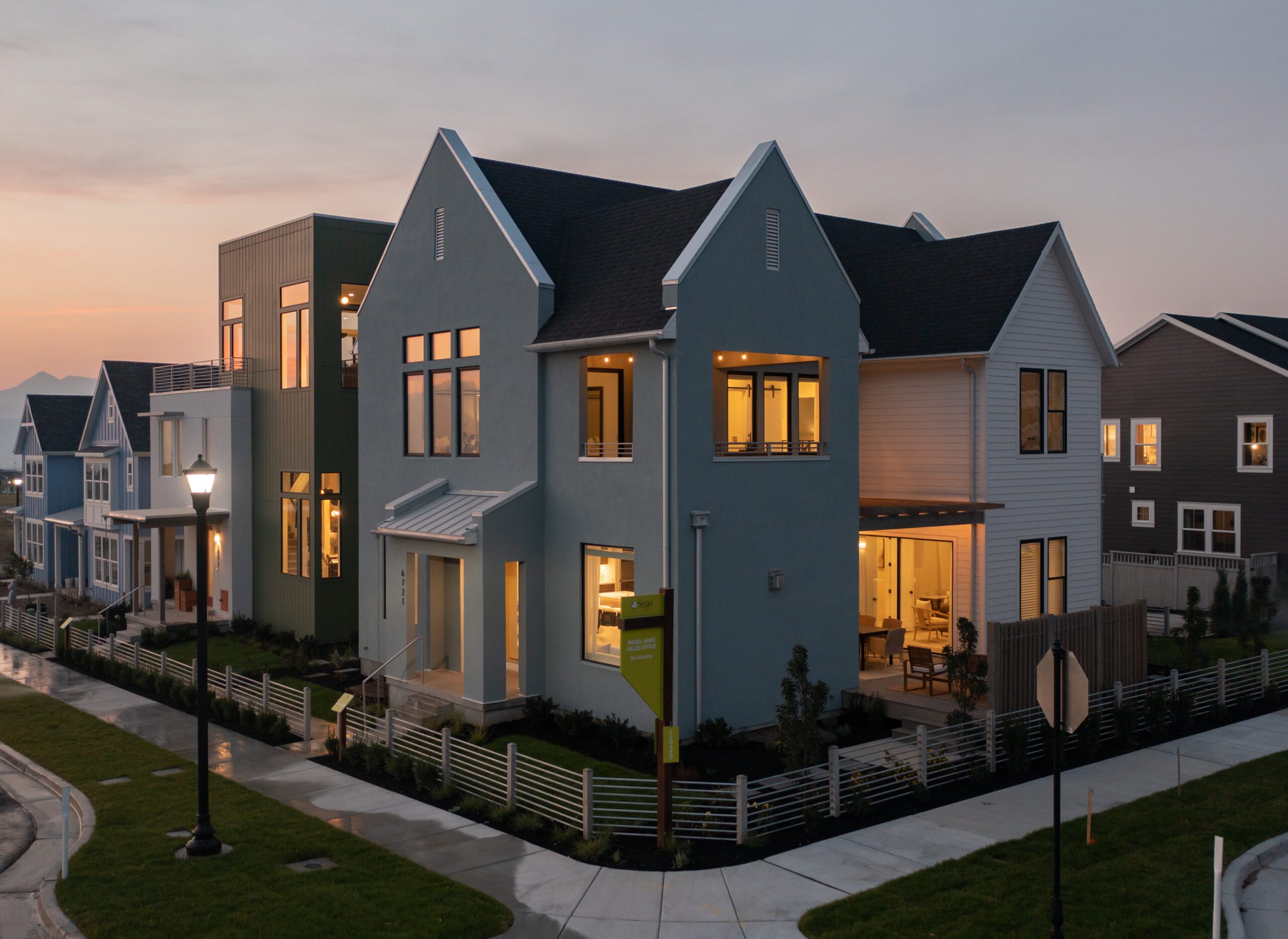From charming towns to beautiful scenery, there’s no question why Utah is one of the most popular places to live in the United States. This eclectic, growing state is also a beacon of healthy living. From world-class skiing to hiking, biking, and climbing, there are many reasons why living in Utah is ideal for pursuing a healthier lifestyle.
Walkable communities are an increasingly common sight here, too. At the end of a busy day or on the weekends, all the best events, restaurants, and attractions are just a stroll away. And while walkability is convenient, it offers a host of other benefits, too. Here’s how walking is great for the environment, your health, and your sense of community.
What Are The Benefits of Walkable Communities?
When you are looking for a new home, many features might be on your “wish” list: more square footage, open floor plans, a gourmet kitchen, outdoor living spaces. What about walkability?
What is walkability? Per the Climate Reality Project, the term “walkability” means how easy it is to travel around a neighborhood on your own two feet. Many American metro areas were built with car travel in mind, but recent studies have shown that walkable neighborhoods are better for the environment, the economy, and your health. While the walkability of your new neighborhood might not provide the instant gratification of granite countertops or walk-in closets, it will provide a higher quality of life for years to come.
Imagine being able to work, eat, learn, shop, and relax without having to get behind the wheel of a car. A walkable neighborhood raises the frequency of interactions between residents, building ties among neighbors and creating a safer environment. A pedestrian-friendly environment tends to support art and culture in public places, raising the level of creativity and sense of community. And according to Slate.com, homes that are within walking distance of schools, shopping and other amenities sell for an average of 35 percent more than similar properties in a car-dependent neighborhood.
So, what makes a community “walkable”?
- A town center. Some kind of main street, a shopping district or a public space.
- Vibrant activity. A good range of local businesses and public transportation.
- Mixed-use design. Businesses and residences located near each other.
- Public spaces. Parks, playgrounds, recreation, and gathering places.
- Accessibility. Sidewalks for foot traffic, universal accessibility for those on bikes or in wheelchairs.
- Thoughtful design. Homes near schools and workplaces. Streets on a grid, leading to the town center. Bike lanes, protected bus shelters, pedestrian crossings.

In addition to making daily life easy to navigate, a walkable community saves money because you need fewer cars per household, and use the car less frequently. It also is healthier for you, your family, and the environment.
Real estate professionals have noticed more buyers are seeking homes in walkable areas for a variety of reasons. In addition to health or environmental benefits, buyers are learning to appreciate the pros of living within walking distance of their daily stops – especially as gas prices rise and more people are working from home.
When you think about walkability, urban locales might spring to mind. But walkability is expanding to the suburbs. According to Natalie Tsay, senior PR specialist at Niche, areas with higher population density (i.e. cities) tend to be the most walkable, “but that doesn’t mean you can’t find a walkable community a little further out. Plenty of suburbs have good Walkability Grades on Niche.”
So, what kind of ROI comes with a walkable community? For many homebuyers, it’s well worth any additional expense to have a shorter commute, a smaller environmental footprint and more physical activity. From an investment perspective, choosing a walkable community can pay off in the long run. As people are more environmentally aware and seek to rely less on cars, homes in walkable areas will only get more popular. Consequently, as demand grows, cities and towns will likely continue to invest in more pedestrian-friendly infrastructure and encourage more development in walkable areas.

Our Green Homes for Sale in Utah Make a Difference!
At Sego Homes, we build walkable communities, along with homes that are healthy, green, and smart. We focus on creating homes that are healthier for you, your family, and the environment, homes that save money by being less expensive to heat and cool, and are equipped with the latest technology. Here are some of the features you’ll find in our eco-friendly homes for sale.
Healthy. We want the air you breathe to be cleaner, so each Sego home is designed and built to create a healthier indoor-air environment. Our new homes include:
- 100% Indoor airPLUS Certification
- Washable/reusable MERV 11 enhanced air filtration system
- Low-VOC paints
- Materials and adhesives that don’t off-gas harmful fumes
- Proper ventilation and fresh air through efficient HVAC systems
- Optional water filtration systems, water conditioning systems, and central vacuum systems
Green. Sego Homes is a proud partner of the ENERGY STAR Program. ENERGY STAR not only helps save money, it helps protect the environment with energy-efficient products and practices. ENERGY STAR also offers solutions to make homes more comfortable and reduce energy costs.
Smart. Your new Sego home is equipped with the latest technology and ready to adapt to new future advances in technology. All Sego homes are wired with smart home technology providing connectivity in every living room. Other standard smart features include USB charging stations in the kitchen, an electronic keyless entry deadbolt at the front door, programmable thermostats, and more. A variety of options are available for home automation to allow you to fully customize the technology and functionality of your home.

Connect with Sego Homes Today!
From healthier, eco-friendly living to smart real estate investing, buying in a walkable neighborhood makes sense on so many levels. If you’re interested in living in one of Sego’s walkable neighborhoods in Utah, contact us to learn more about green homes for sale in Daybreak in South Jordan, Songbird Cove in Lindon, or Station Park in Farmington.





